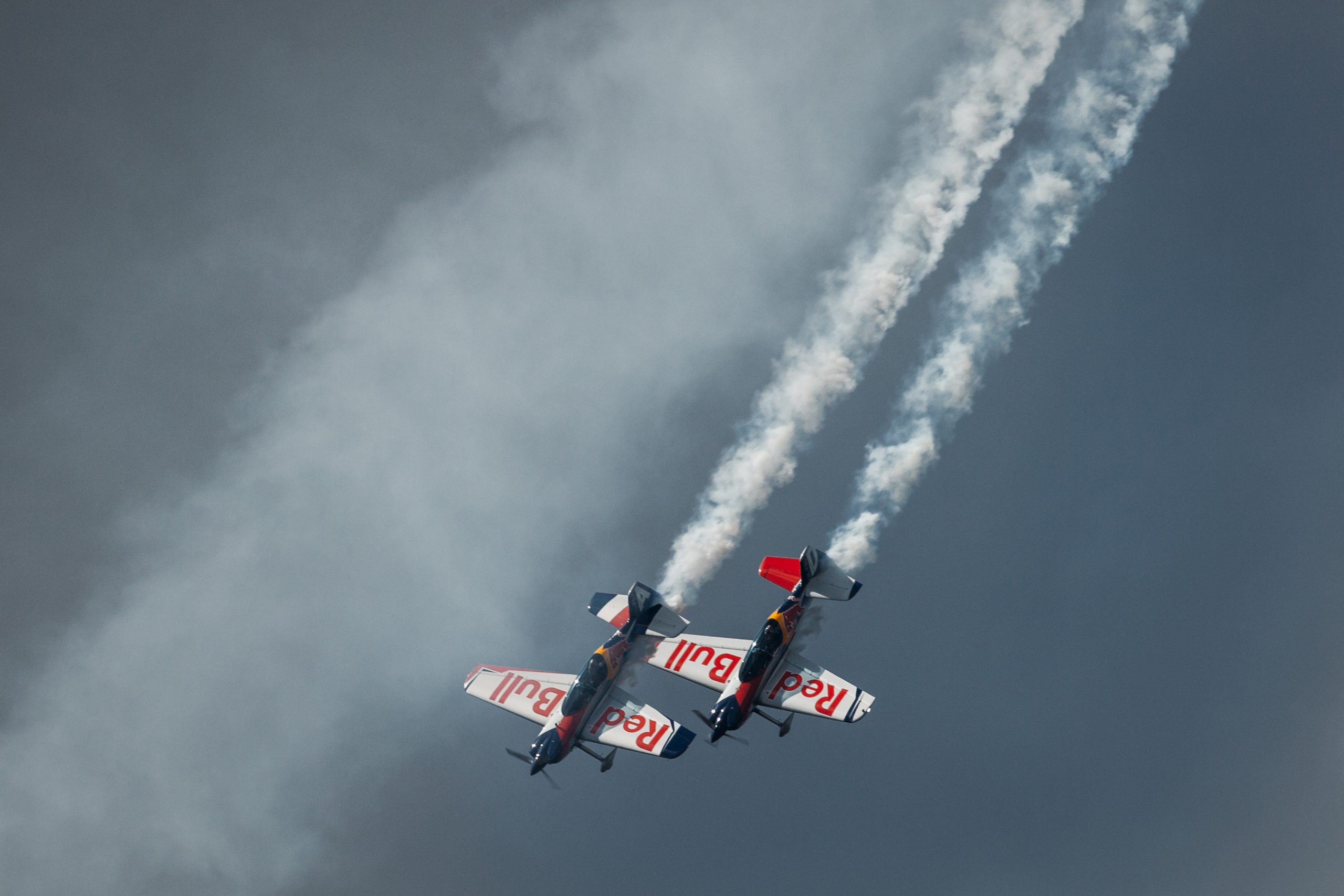
Perhaps the people who do things for clicks on YouTube are going a bit too far. No, belay that. They’re definitely going too far.
Such, at least, is the opinion of the Federal Aviation Authority, which is now looking into a stunt in which two pilots attempted to swap planes in mid-air for a Red Bull stunt and one of the planes ended up crashing into the barren Arizona desert while the other pilot managed to regain control and land the aircraft safely. The pilot whose plane crashed was able to safely parachute to the ground.
The FAA, describing the incident, said “One of the two single-engine Cessna 182 aircraft used in the stunt crashed after it spun out of control. The pilot landed safely by parachute. The other pilot regained control of the second aircraft and landed safely.”
Fox 10, reporting on the incident, adds that “The administration [the FAA] previously denied the request from Red Bull which asked for an exemption from feds to do the stunt, although it violates safe airplane operation protocols.”
Describing in a letter why it was refusing the Red Bull request for an exemption, the FAA noted that such an exemption would not be in the public interest, saying:
The FAA has considered the petition, and finds that granting an exemption from § 91.105(a) would not be in the public interest and cannot find that the proposed operation would not adversely affect safety.
First, the petition fails to address compliance with any other applicable regulations in title 14 of the Code of Federal Regulations during the proposed operation, such as maintaining vigilance to see and avoid other aircraft in accordance with § 91.113. The FAA does not evaluate these deficiencies in greater detail because the petitioner does not provide a sufficient public interest case. Additionally, granting the petitioner’s request for relief would be contrary to previous denials of requests for relief from the same regulation to allow the flight crew to leave the flight deck and airplane during the operation of the airplane so as to allow the airplane to simulate a crash landing.
Second, the FAA has determined that a grant of exemption is not in the public interest for the proposed operation. The petitioner states that he has been conducting the operation in compliance with FAA regulations by having an additional pilot on board the airplane designated as PIC while the airplane swap described in the petition for exemption occurs. Because the FAA cannot conclude that the operations for which relief is sought (i.e., an operation without a pilot in the airplane and at the controls) would not adversely affect safety, and because the petitioner can continue to perform this demonstration in compliance with FAA regulations by including an
additional pilot for each airplane, there is no public interest in granting the exemption request.
Red Bull, hyping the incident before the crash on its website, said:
“On Sunday, April 24th, Luke Aikins and Andy Farrington will go down in history as the first pilots to take off in one aircraft and land in another after sending their airplanes into a nosedive and jumping out of them!
“The two pilots and skydivers taking on this first-of-its-kind jump are Luke Aikins and Andy Farrington. To say these athletes were born to be skydivers and pilots is an understatement. Andy and Luke are cousins and put their aviation heritage down to their grandfather, Lenny, a World War II fighter pilot. Their grandfather was shot down and due to his canopy freezing, was unable to evacuate his P47. When he returned to the USA, he wondered what it would’ve been like to jump out of a plane, so set up a skydiving school.”
Then, later in the explainer, Red Bull described what the pilots would attempt to do, saying:
“When the ‘go’ call is made both Luke and Andy will put their 182s into a tandem nosedive. For both the aircraft to remain in a nosedive they require a custom-built autopilot system to ensure they stay on the correct trajectory (more on the physics of the jump later). Each aircraft has also been fitted with a speed brake and larger than standard wheels to help create more drag and slow the rate of decent and ensure the skydivers can catch up to them. The autopilot will activate once the pilots have manually entered the nosedive and switched the engines off to cause the planes to stall in mid-air.
“With the airplanes holding their trajectory in the nosedive, Luke and Andy will then exit their planes and skydive to approximately 2,000ft above ground level before getting into the other aircraft.”
Unfortunately, things didn’t work out quite how Red Bull wanted and one of the planes ended up crashing. We’ll see what happens next and how the investigation goes.
This #RedBull #PlaneSwap in Arizona was crazy! Didn’t go as planned but luckily everyone is alright! pic.twitter.com/f9cpRclYtT
— Aaron Tevis (@AaronTevis) April 25, 2022
Me before drinking a @redbull
Me After drinking a #Redbull #PlaneSwap pic.twitter.com/HtrlytScbK
— Bale’s bogey Madrid serotonin (@LRMYSoccerOtter) April 25, 2022
By: Gen Z Conservative, editor of GenZConservative.com. Follow me on Parler and Gettr.
This story syndicated with permission from Gen Z Conservative